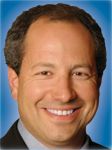Article
Does a 'new normal' exist for financial markets? History says no
Throughout recent history, periods of economic upheaval and market volatility have led people to assume that life had somehow forever changed and that new economic rules or an expanding government would limit growth.

Key Points
Q: Is there really a "new normal" in the markets?


1932: The U.S. stock market had just experienced 4 consecutive years of negative returns. A 1929 dollar invested in stocks was worth only 31 cents by the end of 1932. Hopes were sinking during the Great Depression, and many people felt as though the economy had permanently changed. Many investors left the market, and some would not return for a generation. With what is considered the roughest economic time in U.S. history, the markets looked ahead to recovery. Yet, the ensuing 5-year annualized returns for the U.S. stock market were 15.35%. (All stock market returns are based on the Center for Research in Securities Prices 1-10 Index [CRSP 1–10 Index].)*
1974: Investors had just experienced the worst 2-year market decline since the early 1930s, and the economy was entering its second year of recession. The Yom Kippur War in the Middle East had triggered the Arab oil embargo in late 1973, driving crude oil prices to record levels and resulting in price controls and gas lines. Annual inflation in 1974 averaged 11%, and with mortgage rates over 10%, the housing market was experiencing its worst slump in decades. Prices and unemployment were rising, consumer confidence was weak, and many economists were predicting another depression. The following 5-year annualized return for the U.S. stock market was 17.29%.*
1987: On "Black Monday" (Oct. 19, 1987), the Dow Jones Industrial Average plummeted 508 points, losing over 22% of its value during the worst single day in market history. The plunge marked the end of a 5-year bull market.
But in the wake of the crash, the market began a relatively steady climb and recovered within 2 years. The effects of the crash were mostly limited to the financial sector, but the event shook investor confidence and raised concerns that destabilized markets would increase the odds of recession. The following 5-year annualized return for the U.S. stock market was 16.16%.*
2002: By the end of 2002, investors had experienced the stress of the dot-com crash in March 2000, the shock of the Sept. 11 attacks, and the early stages of wars in Afghanistan and Iraq. A younger generation of investors had experienced its first taste of old-world risk in the "new economy." The following 5-year annualized return for the U.S. stock market was 13.84%.*
2008-today: The market slide that began in 2008 reversed in February 2009, gaining 83.3% from March 2009 through the end of 2010. Despite 2 years of strong stock market returns, memories of the 2008 bear market and talk of the "lost decade" have led many investors to question stocks as a long-term investment. But earlier generations of investors faced similar worries, and today's headlines echo the past with stories about government spending, surging inflation, deflationary threats, rising oil prices, economic stagnation, high unemployment, and market volatility.
Of course, no one knows what the future holds, which brings the concept of "normal" into question. What exactly is the status quo in the markets, and is it really anything "new"?







